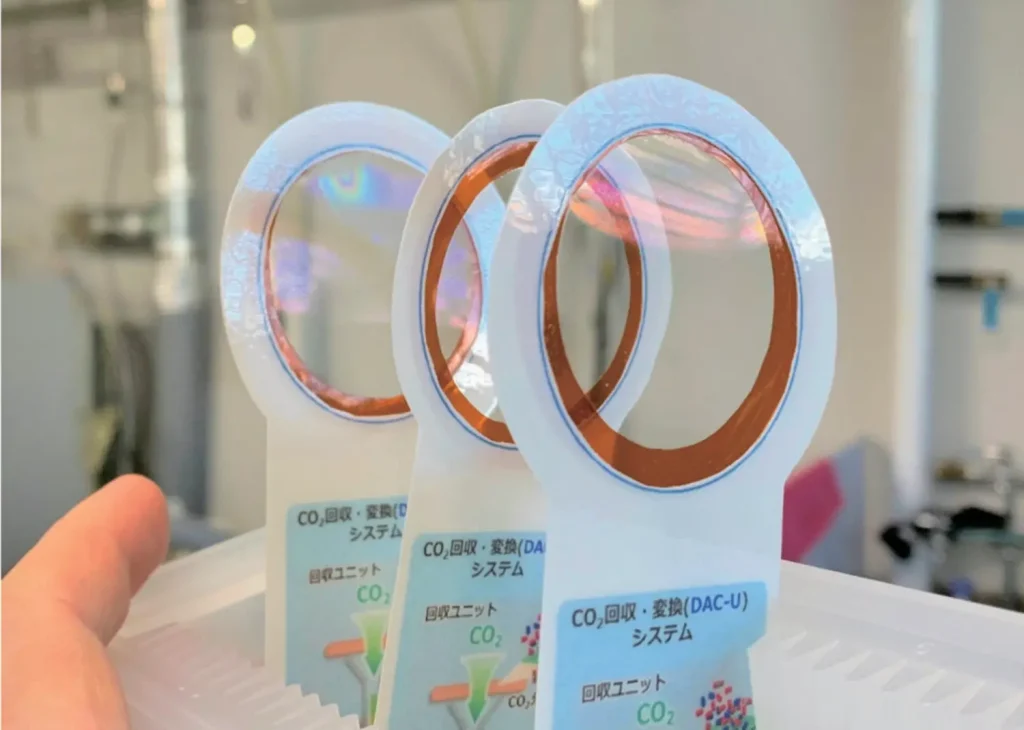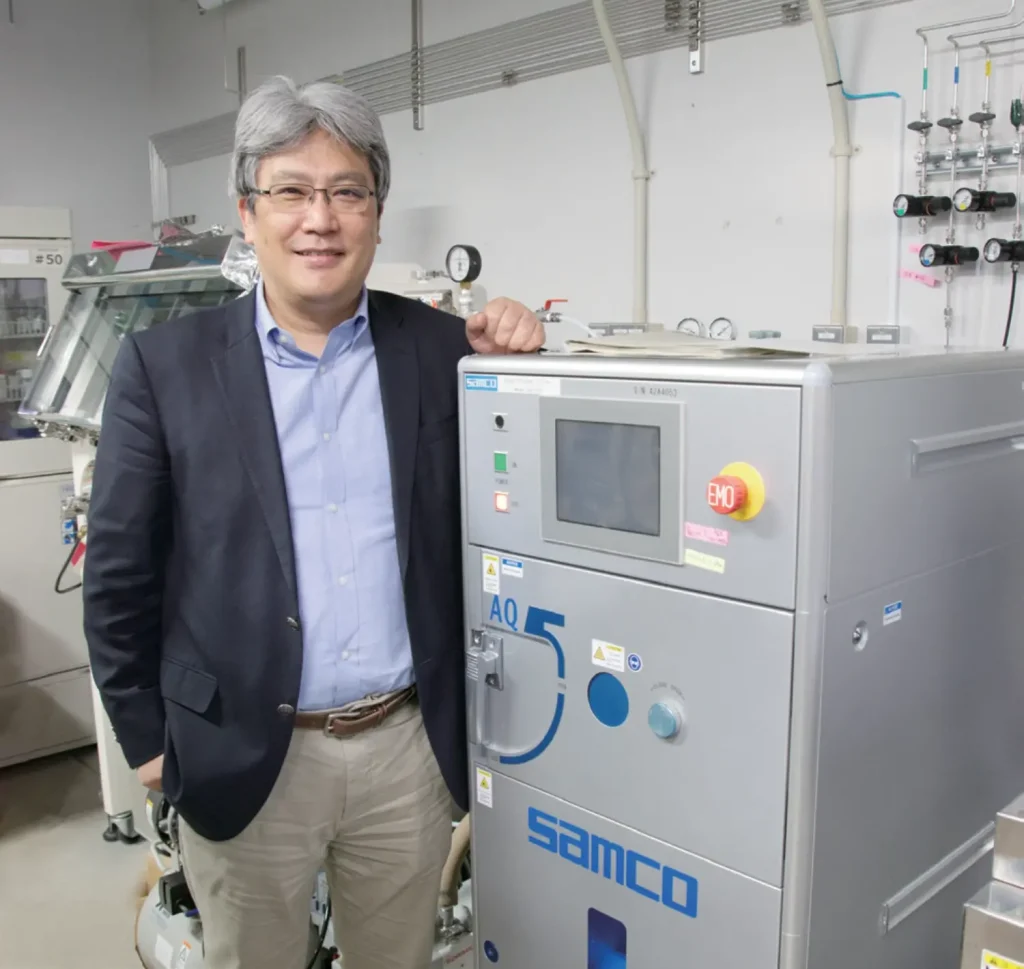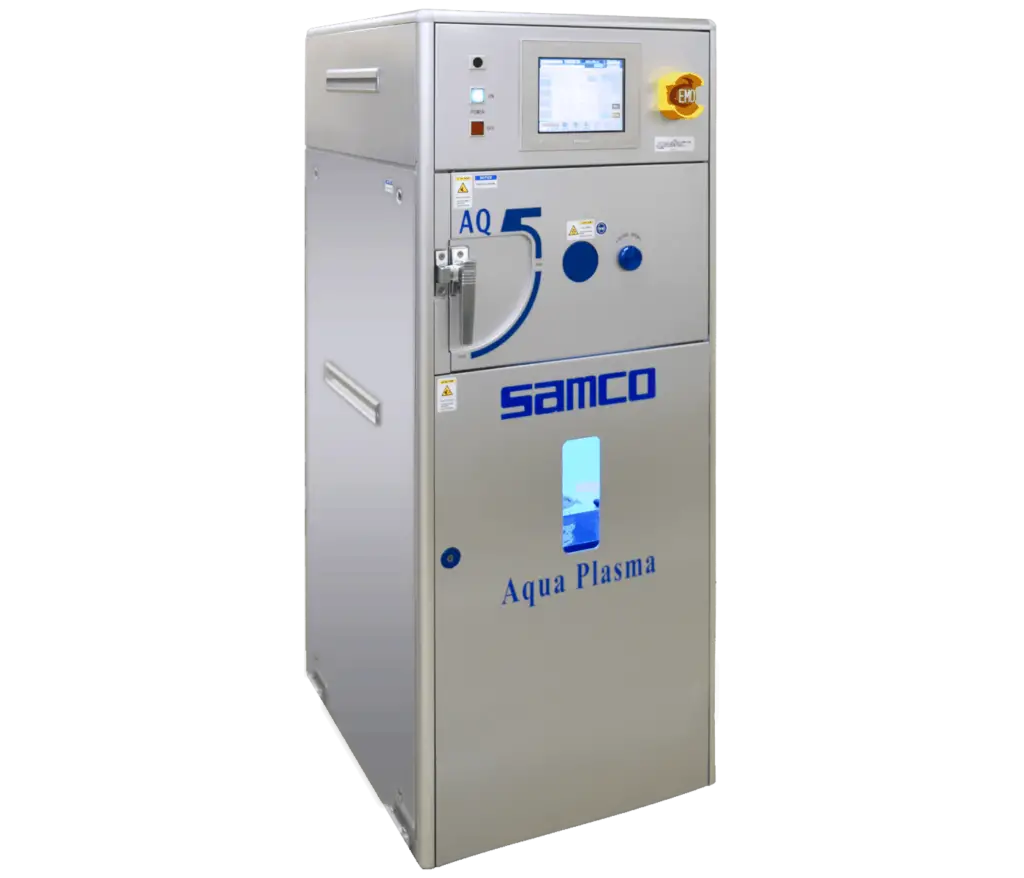Dr. Fujiwara Shigenori
Professor, Kyushu University International Institute for Carbon-Neutral Energy Research(I²CNER)
We spoke with Dr. Shigenori Fujiwara about his research on CO₂ separation nanomembranes and surface nanostructures. He discussed free-standing thin films, localized plasmon resonance in light-harvesting devices, and Aqua Plasma® for surface modification. Dr. Fujiwara also shared insights into his career path and vision for large-scale CO₂ capture technology.

Brief History
Mar. 1999
Completed Doctoral program in Molecular Systems Engineering, Graduate School of Engineering, Kyushu University (Doctor of Engineering)
Apr. 1999 – Mar. 2000
Postdoctoral Researcher, Department of Chemistry (Andrew Hamilton Lab.), Yale University
Apr. 2012 – Mar. 2020
Director, International Institute for Carbon-Neutral Energy Research, Kyushu University
Nov. 2011 – Mar. 2021
Associate Professor, WPI Principal Investigator, International Institute for Carbon-Neutral Energy Research, Kyushu University
Oct. 2007 – Present
Director, Nanomembrane Co.
Apr. 2021 – Present
Professor, International Institute for Carbon-Neutral Energy Research, Kyushu University (Senior Professor)
Apr. 2021 – Present
Director, Research Center for Negative Emission Technology, Kyushu University
Please introduce your current research.
I am working on creating very thin films called separation nanomembranes that capture carbon dioxide (CO2) from the air. I am also working on the fabrication of large-area light-harvesting devices by controlling the nanostructure of various material surfaces and making them interact with light. Especially, our current focus is on the utilization of unique photo properties of noble metal nanoparticles, called localized plasmon resonance. This is the property that when nanoparticles of gold, silver, and other metals are arranged neatly on a substrate as close as possible, light is absorbed by the noble metal nanoparticles and collects in the gaps between the metals like a lens. We are researching the use of light with localized plasmon resonance.
What CO2 separation nanomembranes and surface nanostructure research have in common is “thin films”. Thin films are, in a sense, the surface portion of a substrate, and that is how we position our research. There are various types of thin films, but our research targets are large-area thin films that are free-standing. The difference between our research and that of other thin film researchers is that we are creating thin films that are free-standing, with a flat surface size that can be held in the hand, and that do not require a support base to support the film.

Photo of the large and free-standing nanomembranes – membrane with a thickness of a few hundred nanometers and a diameter of several centimeters (aspect ratio of ~105)
Photo courtesy of Fujikawa Lab HP, Kyushu University
Please tell us how you started your research and how it has developed up to the present.
In my doctoral thesis research, I have been studying organic chemical synthesis of molecules assembled into supramolecular structures under the supervision of Professor Toyoki Kunitake of Kyushu University. This research is called molecular assembly, in which various molecules are added to a solution to form an aggregate structure. One model is a tadpole-like molecular structure called a surfactant, which is an amphiphilic molecule with both hydrophilic and hydrophobic groups. When the structure of amphiphilic molecules are well designed, a very thin structure with a thickness of only about two molecules, called a vesicle, is formed, just like a cell membrane. When I was in college, I did research on fabricating vesicles through self-assembling process of molecules. Later, as I studied how to control and arrange molecules at interfaces and surfaces, I shifted to the field of thin films.
I did not always want to be a university professor. When I was a freshman in college, the economy was just booming with the bubble economy. Therefore, I was interested in industries such as banking, securities, and trading. At that time, it was common for most chemistry students to go to graduate school, and after graduation, they went to work for chemical companies. When I was in my fourth year of college, I began to question my decision to follow the same path. At that time, I consulted with Prof. Kunitake, saying that I wanted to consider other paths instead of going to graduate school. He told me, “Graduate school is where you are trained in the methodology of finding a problem, setting it, how to tackle it, and how to appeal it to the world. Chemistry is just about using materials called chemistry, and the methodology can be used in other fields besides chemistry. I was convinced by this advice, decided to go to graduate school, and have continued on the path of the chemistry doctorate program at Kyushu University, and was assigned as a postdoctoral researcher at the Andrew Hamilton Lab at Yale University, which was famous for its molecular recognition chemistry that precisely identifies molecules using synthetic organic chemistry. I was lucky that I happened to talk to him during an international conference presentation in my third year of the doctoral course.
After one year in the U.S., Prof. Kunitake asked me to join a new project at RIKEN, and I decided to return to Japan. At that time, RIKEN had a relatively large number of people in the physics field, and I was stimulated by their different ways of thinking. When we study surfaces and interfaces, we think about molecular arrangement and structure, but the professors in the physics field were not concerned with chemical structures, but focused on the functions of surfaces and interfaces created by nanostructures in the nanosized region, which is slightly larger than molecules. It is true that my experience at RIKEN has influenced my current research.
Then, around 2010, there was an open call for researchers in CO2 capture at the International Institute for Carbon-Neutral Energy Research (I2CNER) at Kyushu University. At that time, I was already doing research on creating the large and free-standing nanomembranes, and research at the university appealed to me, so I applied for it and was fortunate enough to be hired. Of course, my research is currently focused on CO2, but I think it would be more appropriate to say that I am looking at CO2 as just one of many molecules, rather than focusing solely on CO2 separation and reduction. “Permeation” is an important function in our research on thin films. If we can precisely control the function of permeation, for example, allowing certain molecules to permeate while not allowing others to permeate, we will be able to extend our research to other fields. Separation of gases is also a difficult subject. Because of the surface tension of liquids, they do not easily leak even if there is a small hole at the micrometer level. Gases, on the other hand, can easily leak through small holes. In addition, gases are active even at room temperature, so it is quite difficult to select and separate them well. I think this is a theme that should be challenged academically, so I started by focusing on the molecule CO2 and working on controlling its permeation through thin films.
What are your future plans for your research?
Research on CO2 separation nanomembranes is being conducted as part of Goal 4 “Regeneration of the Global Environment” of the Cabinet Office’s Moonshot R&D Project in Japan. This project aims to complete the preparation for social implementation in 2030, followed by the gradual spread of the technology and completion of social implementation in 2050.
What we are working on is to realize two devices: one that captures CO2 from the air using a separation membrane, and the other that converts CO2 into a usable substance. The goal of the Moonshot R&D project is to complete the development of these two devices by 2030, and to move them to the stage where they will be mass-produced and implemented in society by 2050. This is the goal of the Moonshot R&D project. In this project, I am in charge of CO2 capture, and Prof. Miho Yamauchi of Kyushu University and Prof. Ken-ichi Shimizu of Hokkaido University are in charge of CO2 conversion, and we are collaborating in our research. We have already achieved CO2 capture from the atmosphere and chemical conversion of the captured CO2 into CH4, CO, etc.
How do you use Aqua Plasma® Cleaner AQ-500?

Aqua Plasma® is used for surface modification of CO2 separation nanomembranes. The molecular design of the surface of the separation membrane is important, because when it comes to thin films, the performance of the separation membrane is almost entirely determined by the molecular properties of the surface. Basically, the more reactive functional groups are easier for us chemists to deal with, and Aqua Plasma® is effective in modifying the surface to make it hydrophilic, which is unique compared to other hydrophilic treatment methods such as oxygen plasma or ozone treatment.
We use polydimethylsiloxane (PDMS)-based materials that have high gas permeability for separation nanomembranes. The surface of the separation membrane made of PDMS is hydrophobic, but many materials with high CO2 selectivity are hydrophilic materials. In order to place a material with high CO2 selectivity on hydrophobic PDMS, the surface must inevitably be modified. However, when PDMS is treated with oxygen plasma, for example, it is generally said that a SiO2 layer forms on the surface, which densifies the film and dramatically deteriorates gas permeability. Therefore, when utilizing oxygen plasma for the purpose of hydrophilizing PDMS surfaces, it is imperative to note that the treatment time is short, lasting only a few seconds, and the radio frequency power employed is minimal, at a mere 10 watts.
Compared to oxygen plasma, Aqua Plasma® seems to densify the PDMS surface a little milder. Also, since we are producing thin films, the material to be applied must also be thin. Aqua Plasma® can uniformly hydrophilize the PDMS surface, so it is very useful for us.
What do you keep in mind in your daily research?
While in Prof. Kunitake’s lab, I never received detailed instructions about my research. Of course, there were times when he consulted with me and took care of me regarding the main lines of research, but most of the time I was doing research that I enjoyed. In the end, I believe that it is important that I enjoy doing research. Recently, I have been so busy that I haven’t had much time to do experiments on my own, but I have the most fun when I am thinking and working on my own, and I hope that the students in my laboratory will be the same way.
I also treat my relationships with post-doctoral fellows and students not as subordinates and supervisors, but as colleagues and co-researchers who are doing research together. I can teach them about my past research and methodologies, and they have perspectives and ideas that I do not have, which I would like to absorb. I really hope that we can help each other grow through this. For the students, they will be spending an important and irreplaceable time together in their mid to late 20s, and I hope that they will be able to look back on this experience and think that it was meaningful.
Finally, as Prof. Kunitake taught us, I try to play catch-ball between concrete and abstract theories in my research. If you only look at leaves in your research, it is sometimes difficult to find the characteristics of leaves. By changing your point of view, you can see the characteristics of leaves. By going from the concrete to the abstract or from the abstract to the concrete in your research, you will see it in a new way.
Any final words?
My first encounter with Samco was as a manufacturer of semiconductor process equipment, but after a long relationship, I have the impression that the company is not focused solely on semiconductors, but is also building equipment for a wide range of materials science fields. For my part, I hope that you will further accelerate your development in fields other than semiconductors. Since we are aiming for social implementation of nano-separation membranes, we would like to link them to mass production. At that time, if there is a vacuum process for single-wafer processing like semiconductors, it will inevitably take a long time. It would be very attractive if we could do continuous processing, such as pouring a film and depositing it on top of it. What is attractive is that if we can mass-produce the material through continuous processing, we can conduct many new experiments using that material. In materials research and basic research, the ability to produce large quantities is important because it provides the basis for tackling new challenges. I am not sure if vacuum equipment and continuous processing on film are compatible, but I hope that Samco will develop equipment that can be deployed in new fields.
Thank you very much for taking time out of your busy schedule to talk with us.
Process capabilities of Samco's Aqua Plasma Cleaners
Samco’s Aqua Plasma systems utilize water vapor-based plasma treatment for gentle yet effective surface modification. These systems enable oxidation-free cleaning, bonding enhancement, and organic removal across various materials.
Key process capabilities include:
- Reduction of Oxidized Metals – Restores surfaces of Au, Ag, Cu, and more.
- Adhesion Promotion – Enhances bonding without adhesives.
- Resin and Carbon Removal – Efficient ashing of SU-8, PMMA, and other organics.
- Superhydrophilization – Improves wettability for microfluidics and coatings.


